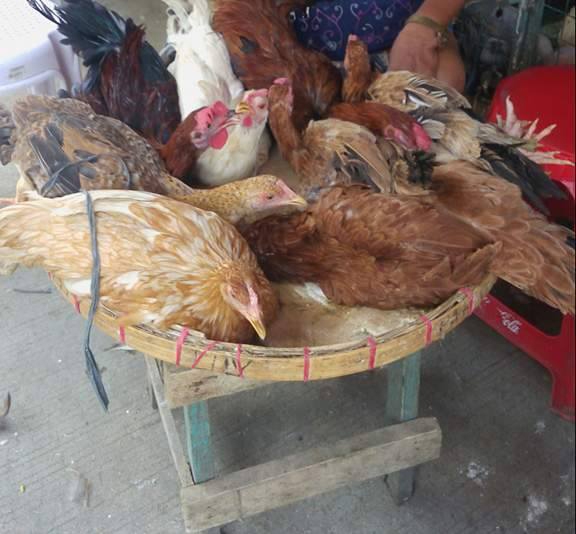
The Cebu Provincial Veterinary office assures that native chickens like these sold at the Carbon Public Market are still free from avian flu. (CDN DIGITAL FILE PHOTO)
CEBU CITY, Philippines — The Cebu Provincial Veterinary office has assured that Cebu remains free from bird flu despite the reemergence of the viral disease in Jaen town, Nueva Ecija.
Dr. Mary Rose Vincoy, provincial veterinarian, said they continued to intensify their surveillance and border controls to ensure that the H5N6 Avian Influenza strain could not penetrate the province’s poultry industry.
Read: Live poultry in Nueva Ecija town tests positive for Avian flu
Read: Capitol Vet: Strict surveillance of migratory birds, poultry amid avian flu outbreak in China
“During the avian influenza outbreak in 2017, Cebu was spared. With the measures nga atong gi-impose sa border, we are hoping the same,” Vincoy said in a press briefing at the Capitol.
Vincoy said they had identified Bantayan Island in northern Cebu as a high risk area for the bird flu considering the poultry industry there.
“We already did our surveillance as early as January but karon nangayo ta og reports from other LGUs under Cebu province because we have identified risk areas. Una ani ang Bantayan Island which most of our layer farms (are),” said Vincoy.
Vincoy called on poultry farm owners to cooperate with them and immediately report if there were unusual mortalities among their livestock.

“Tanan nga naay poultry farms, kung nay mga mortalities, maayo nga moreport gihapon sa veterinary office so that we can check and we also can ask the assistance of the local government units (LGUs) to assist us in the monitoring,” Vincoy added.
{All the poultry farms, if there are livestock deaths, it would be better to report it to the veterinary office so that we can check and we also can ask the assistance of the local government units (LGUs) to assist us in the monitoring.)
H5N6 has already killed 3,000 quails in a farm in Jaen, according to a report of Inquirer.net. Another 12,000 quails in the same farm were also culled to contain the spread of the virus.
The tale of avian influenza, however, is not new to Jaen which was also struck by the H5N6 influenza in 2017.
H5N6, according to Vincoy, had been considered as a highly transmissive strain of the bird flu virus because it was zoonotic.
This means that the disease may be transmitted by the birds to humans./dbs

